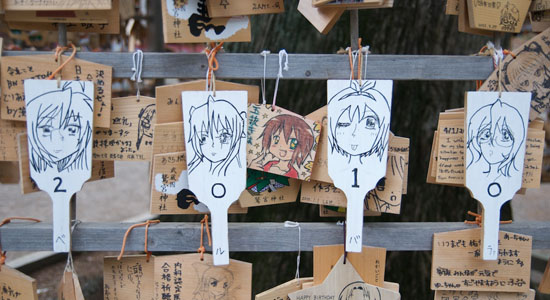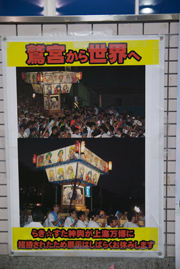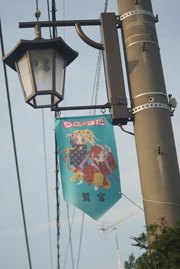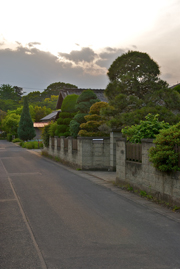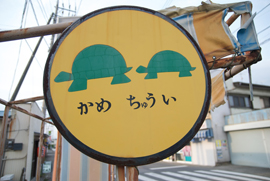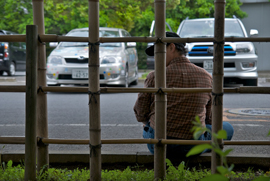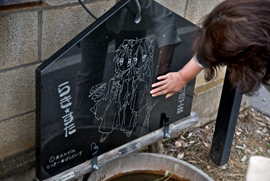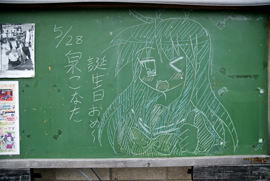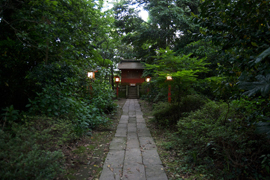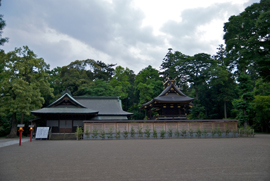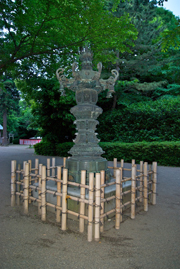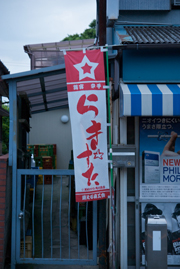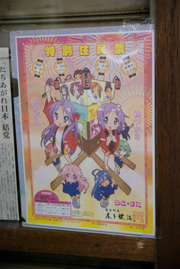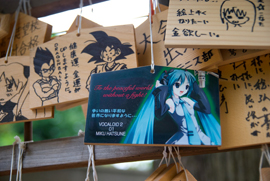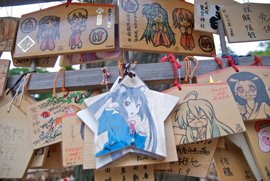He was an old man sitting down in the parking lot. He had just bid farewell to some friends who were shooting the breeze as the sun starts to set on a long, sleepy day in the small town of Washinomiya. As everyone goes their separate ways, he goes to the curb to take a seat and get the attention of a nearby cat. Across from him is his itasha, the infamous otaku cars decked out with all sorts of anime memorabilia inside and out. This one however has done them all one better: in the passenger side seat is a RealDoll who keeps guard over the Lucky Star figures inside.
 “They call me Kami-sama,” he introduces himself. There is not a hint of boast in his voice at this divine pseudonym, the name of God. How could this man, otherwise no different from any countryside uncle, attain such a moniker?
“They call me Kami-sama,” he introduces himself. There is not a hint of boast in his voice at this divine pseudonym, the name of God. How could this man, otherwise no different from any countryside uncle, attain such a moniker?
“I dunno really. I just kept coming here and that’s what they started calling me,” he doesn’t seem phased by the question, unlike some older otaku, who often get taken aback by the enthusiasm of foreign fans.
Here being the infamous Washinomiya Shrine, perhaps a textbook example of just how much the culture has changed. This is the oldest Shinto shrine in the entire Kanto area, period. It has played host to dignitaries Emperor Akihito and the King of Sweden. Traditional performances still abound and are advertised. In a town otherwise lacking even a name-brand convenience store, it’s rather remarkable for such a historical place to exist in the area.
It clearly wasn’t forgotten, but it seemed to be destined to remain obscure and overlooked outside of New Year’s Day, when visitors suddenly pop out of the woodwork to pay their respects to the gods.
Of course, this year-round obscurity was shattered after Washinomiya Shrine featured in the opening animation of 2007’s mega-hit Lucky Star. Soon after, Newtype Magazine put out an article showcasing the real-life locations of the show and suddenly Saitama, the New Jersey of Japan to Tokyo’s New York, had a cult tourist destination. Itashas soon came to dot the parking lots and the ema prayer tablets, usually adorned with wishes for prosperity, became adorned with elaborate illustrations of Lucky Star or whatever else the ‘worshipper’ had in mind.
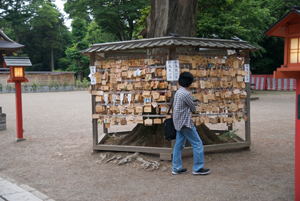 To this day, three years after the Lucky Star anime went off the air, people from around the country still flock to the shrine. “Yeah, there were about 70 people from [nearby] Satte City here earlier,” Kami-sama went on to tell me. Was it some kind of pre-organized 2ch meet-up? “Nah, everyone just came here on their own. There wasn’t any plan that I’m aware of.” Not too surprising, given that it was on May 28th, the “birthday” of that idealized object of affection for shut-ins everywhere, Konata Izumi.
To this day, three years after the Lucky Star anime went off the air, people from around the country still flock to the shrine. “Yeah, there were about 70 people from [nearby] Satte City here earlier,” Kami-sama went on to tell me. Was it some kind of pre-organized 2ch meet-up? “Nah, everyone just came here on their own. There wasn’t any plan that I’m aware of.” Not too surprising, given that it was on May 28th, the “birthday” of that idealized object of affection for shut-ins everywhere, Konata Izumi.
Back when the surge first came, there was a level of uncertainty and mistrust. When all is said and done, however, money talks and the 100 million yen (~$10 million) of revenue brought to the town was enough to convince the residents to embrace those red sailor suits, especially in tourism-deprived Saitama.
The streets are lined with decorative Lucky Star banners and, only until recently, a decorative Lucky Star-themed omikoshi mini-shrine greeted visitors at the station. (The omikoshi is right now in China for the time being, natch) and, just outside the shrine, a small coin pond with engravings of Lucky Star heroines. It’s the kind of thing that wouldn’t make one blink twice in Tokyo; but it comes off as almost eerie in the quiet countryside.
As the sun went down and shrine grounds grew dark, it’s hard not to be put into a pensive mood. With prayer tablets with Hatsune Miku looking on next to more banal requests for promotions at work or good marks on tests, it makes one think where this is all going.
The place that was once displayed proudly to foreign and local dignitaries has been reduced to the glorification of little girls who spend too much time playing video games and the 50-year-old itasha-driving men who love them. At the gut, this mix of consumerist sub-culture and corporate promotion with an ancient relic leaves klaxons blaring at the back of the mind. Change is good but how much further can, or should, it go?
“Excuse me? Am I in the way?” calls out an old man. It’s not Kami-sama. Just another tradition-minded man out on a chilly evening to pay his respects. I’m in front of the shrine positioning to take a shot of the main shrine bell. As I fire away, he goes through the normal routine, offering money, bowing and ringing the bell to call forth the attention of the gods.
This Lucky Star boom is bound to fade away as fans move on to the Next Big Thing. Perhaps for the time being, it’s no harm to let us all have our fun. A three-centimeter separation, perhaps?




